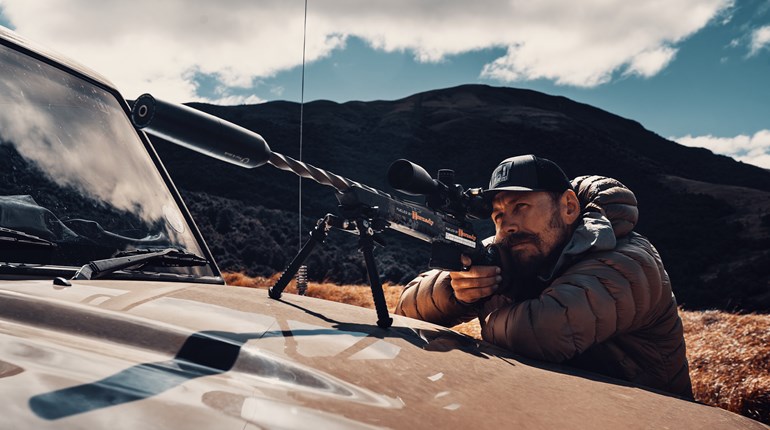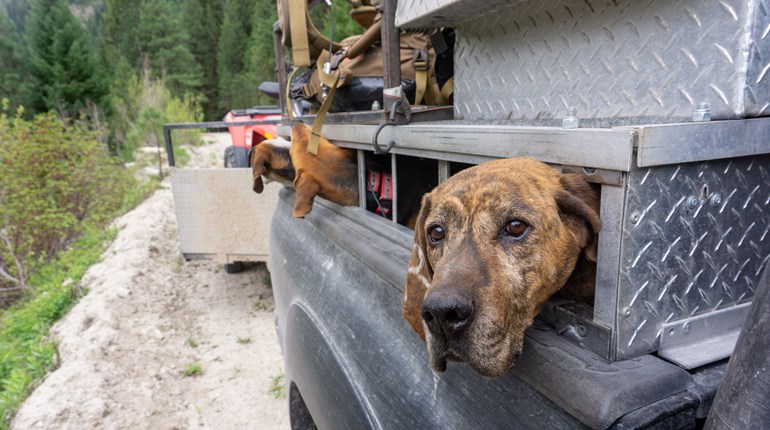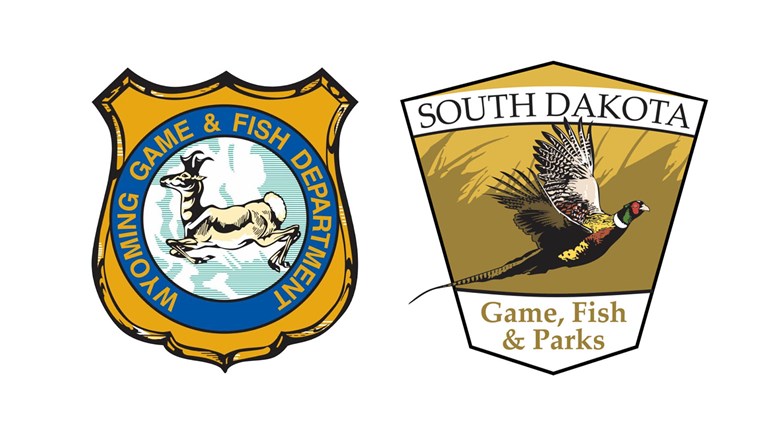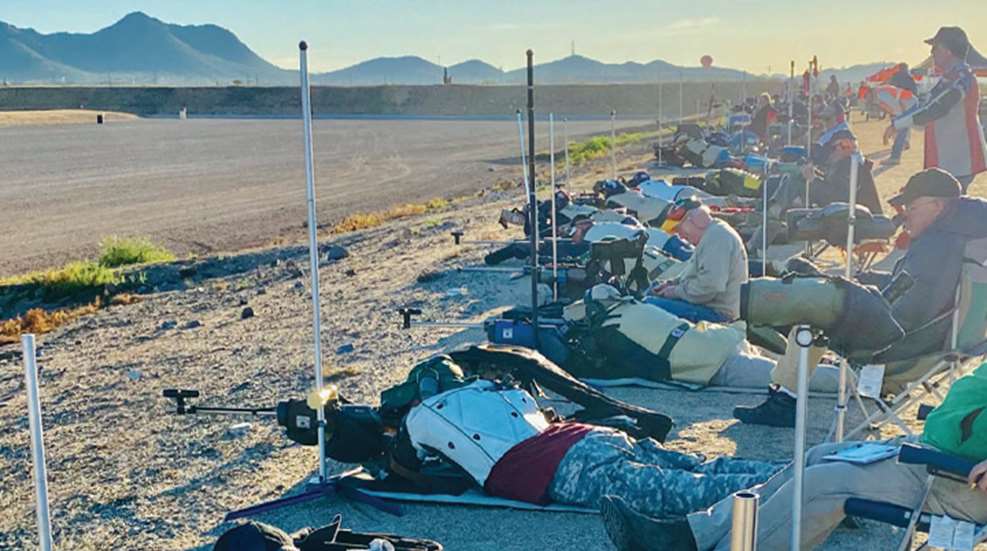
It begins in darkness months before the actual event. Long-range shooters all over the country set alarms and make sure their computers are ready to go when registration opens on the Practiscore page for the Desert Sharpshooters Southwest Nationals (SWN). You have around 5 minutes to register for the Grand Aggregate Match before it sells out. On registration day, Facebook comes alive with people exchanging notes to each other immediately afterward. “Did you get in?” is the chatter of the morning as people get ready for breakfast from Washington to Texas. The same ritual is repeated around the world—all synchronized to Arizona local time. Those that made it in pat each other on the back for having successfully navigated the equivalent of buying tickets to a sold-out rock concert.
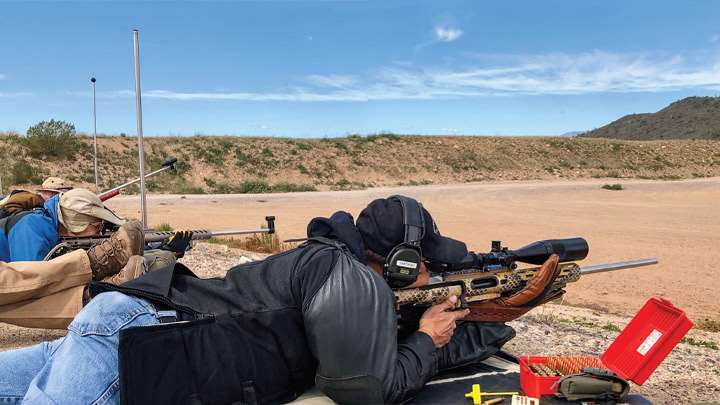
Match Prep
My Long-Range Any/Any rifle for the SWN would be my Eliseo R1 long-action in .284 Win., affectionately known as a “snake gun” because of the water transfer print pattern that was applied to it when it was built. It’s topped with a Nightforce Benchrest scope. The straight .284 Win. round is a reliable performer at 1,000 yards and beyond. Mid-Range, Palma and LR Any/Iron was problematic because I didn’t actually have the gun assembled. The Eliseo R1 short-action chassis was sitting in my closet, but the barreled action would require me to rendezvous with my friend Paul Schultz to process the gun through the California DROS system to transfer full ownership to me. However, I did have a set of Phoenix Precision sights that would serve as the basis for irons for the Palma gun. I assembled the rifle including properly pinning the Picatinny rail per Eliseo’s instructions. I already had a box of Sierra 155s, and I ordered some Peterson small primer cases from Creedmoor Sports and allocated a portion of my stash of Varget to the endeavor.
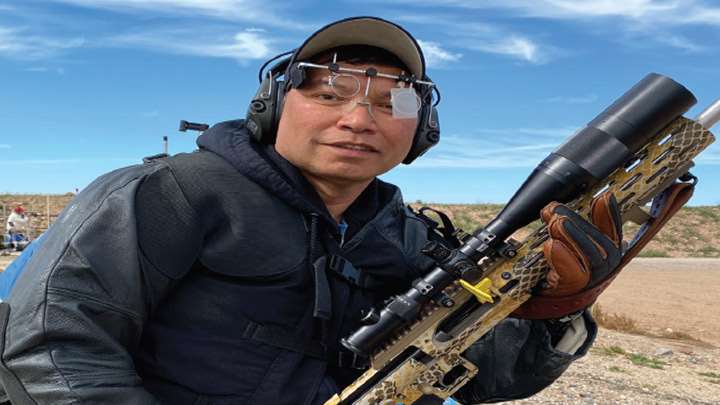
I got the Palma gun zeroed at 200 yards and the 155-grain ammo chronographed at 3,000 fps off a Labradar. I loaded the ammunition information into my Kestrel 4500 with Applied Ballistics and the Ballistic AE app on my phone and set up a range card converting minutes of come up into combinations of front-sight-notch shift and rear-sight dial to achieve minimum movement of the rear sight across the span of distances to be fired.
One cool item to note is that Kestrel AB allows for up to five target presets in the computer that you can set up. I set mine to be based on a 100-yard initial zero then added 200-, 600-, 800-, 900- and 1,000-yard distant targets into the calculator’s presets. This is a little different from setting the Kestrel up for XTC, where you want 200, 300, 500 and 600 yards in the presets.
An Eliseo gun’s almost infinite adjustability to mate to your body requires getting behind the gun. I fine-tuned the configuration of the chassis at my club, replicating the buttstock settings from my other Eliseo guns—mostly spending the day rotating the forearm tube until finding that perfect point where the web of my hand went comfortably into the hand stop, with the bubble level set happily in the middle of the tube atop the front sight. Among the unanticipated bugs I worked out was realizing exactly what happens if you zero the turret knobs of a Phoenix sight wrong and don’t tension the engagement screw of your elevation knob properly. Mischief managed. Or so I thought anyway.
Ben Avery
Ben Avery Range in Phoenix, AZ, is a special place for shooters. The facility is operated by the Arizona State Game and Fish Department, and is one of the largest shooting parks in the world with ranges for nearly every shooting discipline. The High Power Rifle range is 1,000 yards deep and 100 firing points wide.
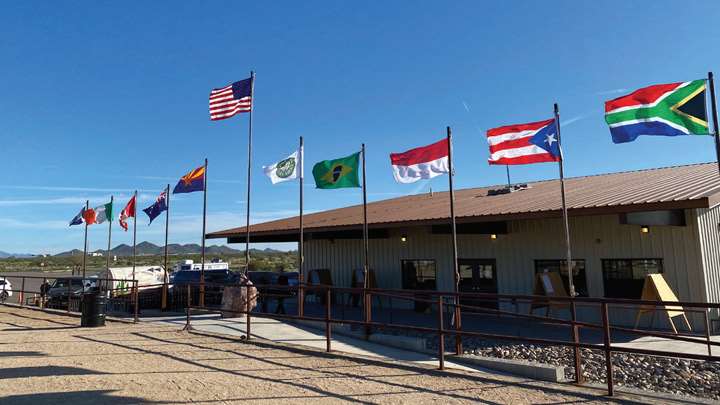
The SWN hosts three long-range target shooting disciplines in a Grand Prix match. The firing line is split into thirds accommodating Sling, F-TR and F-Open competitors in roughly equal amounts. During the match, flags of every nation in attendance are flown. On the first day of competition, shooters stand at attention while the anthem of every nation is played over the loudspeakers. It’s quite a way to start the day as the Arizona sun slowly rises in the east. And it’s not uncommon at that time of day for hot air balloons to come floating by, carrying tourists with the morning wind along a road called the “Carefree Highway.”
Ben Avery is a place where you have to watch wind flags and mirage like a hawk. More often than not, the wind will come from a quartering direction from your rear. It will clock back-and-forth every few minutes and rise and fall in amplitude. The mirage will reverse in ways that will sometimes confound what the flags are saying.
Before this year, I had only shot Ben Avery out to 600 yards in service-rifle matches. At this distance, you spend a lot of time staring into your spotting scope and thinking about making a click or two of adjustment to stay ahead of the wind shifts. This match was eyeopening in regard to how different surfing the wind is shooting long range at Ben Avery.
At these distances, .30-cal. bullets leaving the muzzle at 3,000 fps react to the wind like smallbore ammunition. Bullets rise and fall in response to the wind clocking in direction. Left and right motion picks up exponentially as more flags rise into the air, then heading radically in the other direction as they dip.
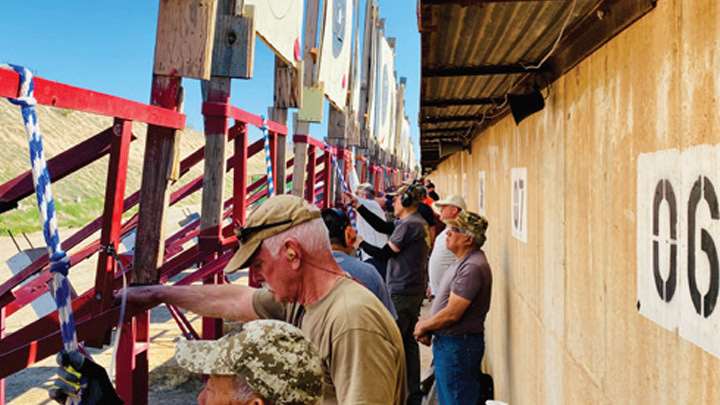
One of my most poignant lessons from the SWN was witnessing conditions blustery enough to where the line will strangely go quiet, as Palma team coaches tell their shooters to take a nap while the wind is settling into its next stable condition.
For shooters like myself who do not have home-field advantage, you hear chatter along the lines of, “Well, I guess I called that one wrong.” But for those shooters who do know these winds, delivering perfect 150s or 200s is the order of the day.
Regardless of your plight, there’s a joyous zen that comes over you as you surf the wind shifts of this range. It undulates on a human scale; one that can be appreciated as it is experienced.
Match Journal
Thursday, Feb. 6 would be my first match at the event—the first full-distance Palma match of my life. Things went as expected, which is to say I had no idea what I was getting myself into. The gun and ammunition were fine. My position was fine. However, my sights were completely wrong for this game.
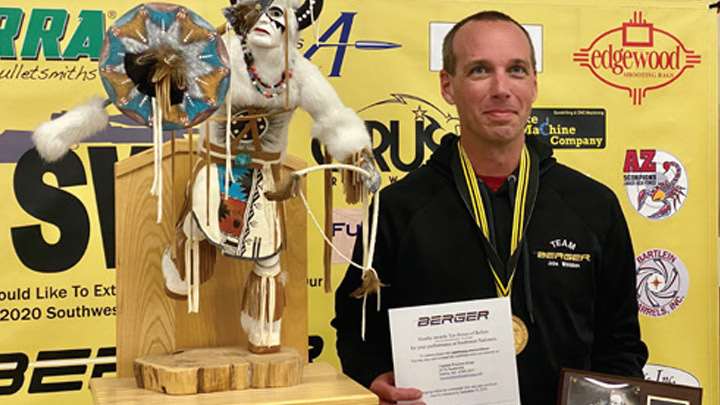
The 800-yard stage went well. Zeroing-in did require extra rounds, but you do have unlimited sighters. The target was a little hard to see, but not unmanageable. My rear aperture kept on trying to unscrew itself, a problem I thought I had tackled, but apparently not. What I needed was to set up my rear aperture with a jam nut that could lock itself properly into a high-recoiling .308 Win. rifle.
At 900 yards, the fact that I did not have a diopter in my front sight made it clear to me that I was in trouble. The great thing about shooters of course is that the second they hear you are in trouble, they immediately start to help you. My teammate, George Carr, took the diopter off his front sight and gave it to me to shoot my 1,000-yard stage. This helped immensely and was a lifesaver—I would never have been able to see that speck the target turns into at a grand without it.
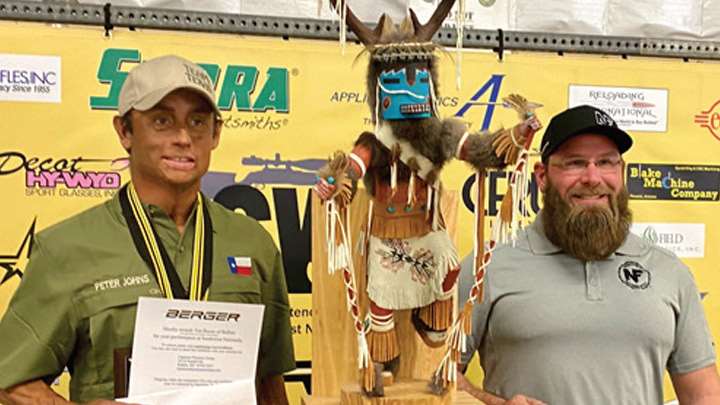
At the end of the day there’s a Swap Meet. An old friend, Marco Rojas, gave me a deal on a Gehmann 510 aperture that has a jam nut. For my front-sight problem, teammate Ken Letwin dug out a 22mm 0.5 diopter and 4-6mm iris from his kit to lend me to use. This revised sighting system was night and day. I was now able to clearly see the spotter in the middle of the black. I could even see the shadow of the spud at 1,000 yards when the light was right. Now I could enjoy muttering, “Wow, I guess I needed to dial that one more aggressively,” like the other first-timers surfing Ben Avery’s wind at long range.
In total, I shot my Palma gun for two Palma matches, one Any/Iron 1,000-yard match and one LR team match in Phoenix. On the last day, I shot the “Snake Gun” enjoying the better wind bucking of a .284 Win. and looking through a Nightforce scope. From a newbie start, I ended my shooting with decent scores—and a lot more knowledge about the long end of the game than I had ever known. I’m going to shoot more of these matches.
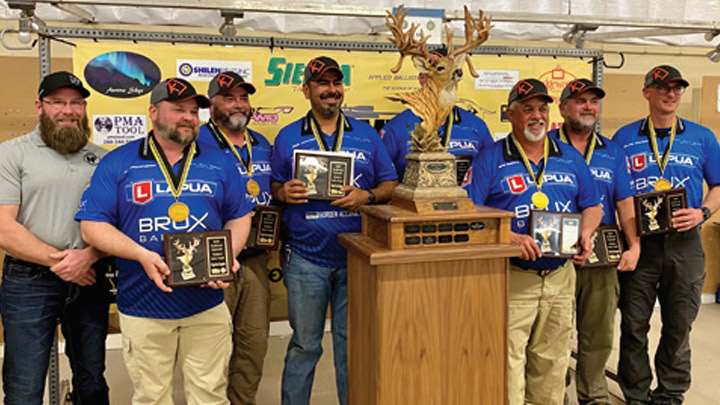
One of the most unique aspects of the SWN is the prize raffle that everyone is eligible to enter. The SWN banquet is basically a gigantic prize drawing with the only rule being you have to be present to receive your prize. For precision shooters, the prize of prizes this year was a mini-lathe that accurately shaves case necks. The first person named made a beeline for it—bypassing a pile of scopes, electric annealers, rifles, chassis systems, barrels, bullets and more. This prize format follows the ethos of competitive shooting—one large family that looks out for each other.
No doubt about it, the SWN is a prestigious Grand Prix event. There are some seriously hard-holding performances in this tournament. Attend and find yourself shooting with internationally recognized icons, shooters trying to make it onto the U.S. teams and lifelong marksmen savoring the joy of their craft. Out of this pile of talent, three teams and three individuals rise to the top. View the full results of the 2020 Southwest Nationals here.
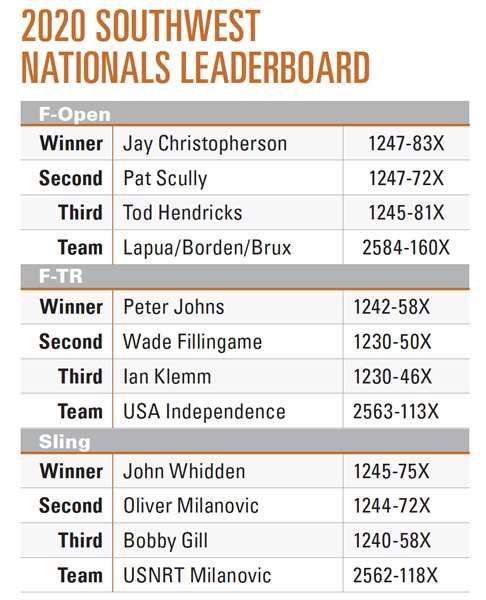
See more: F-Class Equipment Choices













